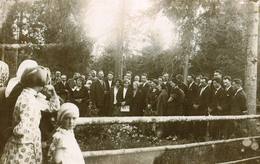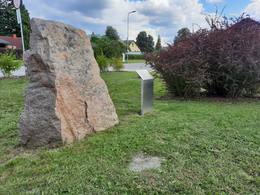Battle of Bey (Babeck) I Wars of Independence
The Battle of Beja or Battle of Babecka was a battle during the Latvian War of Independence on February 22, 1919, near Beja parish house and parish school in Kolbergi parish, between soldiers of the Finnish volunteer regiment "Northern Boys" and the Soviet Latvian Army. It is known in Finnish history as part of the Alūksne Operation (Finnish: Marienburgin operatsässa).
Finnish volunteers, together with the Kuperjanov battalion of the Estonian army, liberated Valka on February 1, 1919. Before the liberation of the city, the combined Finnish-Estonian forces fought a heavy battle near Paju Manor on Estonian territory, where they were fought by units of the Latvian Red Riflemen of the Soviet Latvian Army. In these battles, 40 Finns died and 90 were wounded. On January 31, the Estonians, together with the Finnish volunteers, occupied the city of Valka and entered Latvian territory. Implementing the operational plans of the Estonian army command, Estonian and Finnish units continued their offensive in February 1919 to reach the line Ainaži-Sedas River-Ape-Irboska. Contrary to the plan and strategic plans of the commander-in-chief of the Estonian army, General Juhan Laidoner, the commander of the Finnish volunteers, Hans Kalm (Hans Kalm, 1889-1981)19. On February 21, the Finns took Alūksne, losing three officers and 15 soldiers in the battle. On February 22, an Estonian armored train arrived along the Valka-Alūksne railway.
On February 22, Finnish volunteers from Alūksne headed towards the Russian border, but a clash with Red Army soldiers occurred near Beja. 10 Finnish soldiers fell in the Battle of Beja: Ahola Lauri, Hillilä Erki, Kattainen Aatu, Kaakinen Paul, Kejonen Juho, Kuttinen Toivo, Murto Leo, Nieminen Vihtori, Schöneman – Soriola Eino, Eino Kenraali. Almost all of them are buried in the Finnish soldiers' fraternal cemetery in Beja.
Finnish soldiers returned to Alūksne and participated in the parade marking the first anniversary of the proclamation of Estonian independence on February 24, but returned to Valka on February 26.
More information sources
Juris Tsiganov. Catfish “Northern Boys” fights in Latvia. SARGS.LV, 10.01.2015.: https://www.sargs.lv/lv/interwar-periods/2015-01-10/south-north-zenu-china-latvia#lastcomment
Finnish Soldiers Brothers Cemetery in Bay: https://timenote.info/en/Finnish-soldiers-Brothers-Cemetery
Related timeline
Related objects
Memorial stone to the Finnish volunteer regiment "Boys of the North"
Located in Alūksne, at Jāņkalna Street 52, near the Alūksne narrow-gauge railway station.
On February 23, 2019, to mark the centenary of the Latvian War of Independence, at the initiative of the Independence Struggle Traditions Association (Finland), a special memorial site was created to honor the Finnish volunteers who fell for Latvia's independence, where a special boulder and an information plaque testify to the historical events. The memorial stone traveled to Alūksne from Finland - the Salpa Line, which was built in 1940-1944 to protect Finland's Eastern border. The 1,200 km long Salpa Line is one of the most notable defense lines of independent Finland, as well as one of the strongest and best-preserved defense structures of this type in Europe after World War II.
The stone brought to Alūksne symbolizes the struggle of two peoples - the Finns and the Latvians - for their independence. The Finnish volunteer regiment "Boys of the North" went to help the Latvians protect the freedom of the new Latvian state. On February 21, 1919, the "Boys of the North" participated in fierce battles in the vicinity of Alūksne (Marienburg). After a five-hour battle near the Alūksne railway station, the Finns took Alūksne. In this battle, 23 Finnish volunteers lost their lives and many were wounded.
Related stories
Battle of the Finnish Volunteer Regiment "Northern Boys" in Beja
On February 23, 1919, a reconnaissance unit of the Finnish volunteer regiment "Boys of the North", hoping to obtain additional weapons and ammunition, arrived at the Beja School ravine, where a clash with the Bolsheviks took place (Battle of Babecka). 10 soldiers of the Finnish regiment fell in this battle.






